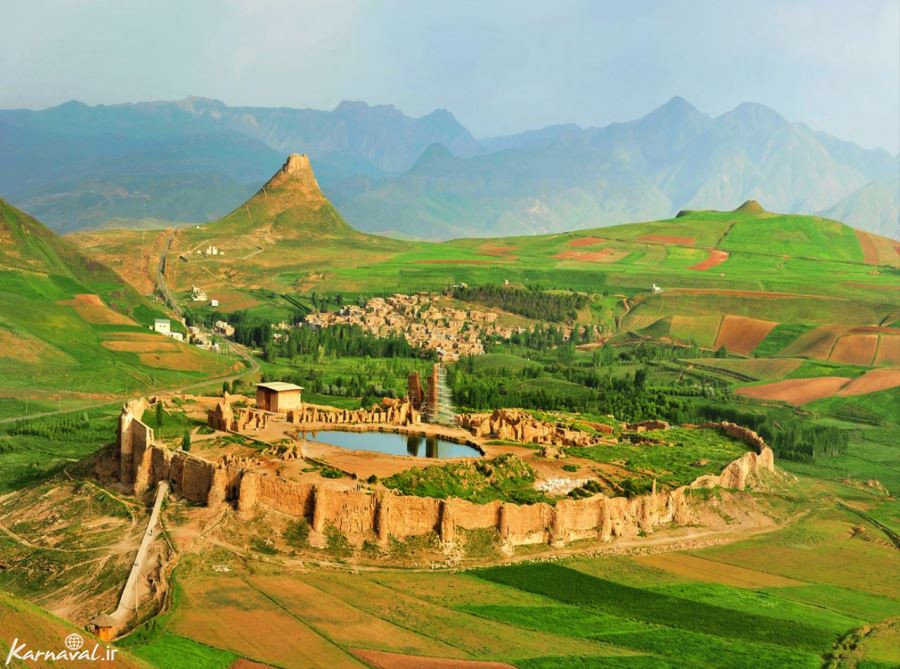Takht-e Soleyman: Harmonious sanctuary inspired by natural context

TEHRAN – Overlooking a lake with a backdrop of a snowcapped mountain range in northwest Iran, lies the UNESCO-registered Takht-e Soleyman (“Solomon’s Throne”), an archeological and touristic site that bears testimony to various eras of the nation’s history.
Situated in the southeastern highlands of West Azarbaijan province, the property encompasses a lake roughly 80 by 120 meters and a Sassanid-era Zoroastrian temple complex dedicated to Anahita, an ancient goddess of fertility, parts of which were rebuilt in the 13th century during the Ilkhanid era.
The ensemble was established in a geologically anomalous location as the base of the temple complex sits on an oval mound roughly 350 by 550 meters.
Inspired by natural context, the rich harmonious composition draws local and foreign travelers who want even for minuets revel in its peaceful atmosphere.
According to Britannica Encyclopedia, its surrounding landscape was probably first inhabited sometime in the 1st millennium BC. Some construction on the mound itself dates from the early Achaemenian dynasty (559–330 BC), and there are traces of settlement activity from the Parthian period.
Under tourists’ eyes
In what follows, a select of comments that foreign visitors have already posted to TripAdvisor, a fairly popular travel website, has been given:
‘Off the beaten track but worth it as long as the weather holds!’
Very few Western tourists venture this far but this Zoroastrian fire temple sits in an amazing landscape. The few buildings that are left are ruins, but the site is surrounded by an ancient wall and has amazing backdrops of snowcapped mountains.
The weather is very changeable so wrap up warm when the sun goes in. (rdella from UK; reviewed May 24, 2017)
‘Beautiful site’
The place and its history are impressive and beautiful. A map of the area with English explanations is available. Entrance fee 200.000 Rials for foreign tourists. (StefanBaW235 from Germany; reviewed April 16, 2017)
‘a UNESCO site not to be missed’
What an incredible historic site. Sassanids warriors and kings, Zoroastrian fire and Anahita water goddess worshipers all co-existed here. Even when the Mongols appeared they did not destroy it, but appreciated its deep Crater Lake, and volcanoes around.
It is amazing that it is so well preserved after so long... (Miriahm D. from Colorado, the U.S.; visited May 2016)
‘This is amazing’
The site is on a volcanic vent combined with artesian well. It was covered in silt from various discharges over the centuries until early last century. The pool of water is very deep and fissures, the source of the water, go even deeper. The high mineral content helps fertilize the surrounding orchards. Intriguingly, the site was important for the Persians and then also the later Ilkhanid Mongol invaders, who modified it. The on-site guide was excellent and brought it all to life (including the 12 fortresses which surround it). This is a compelling visit, especially when you consider the full context. (PeterC489 form London; reviewed September 9, 2015)
PHOTO: A general view of Takht-e Soleyman, a UNESCO World Heritage site, and its rugged landscape in northwest Iran.
AFM/MG
Leave a Comment